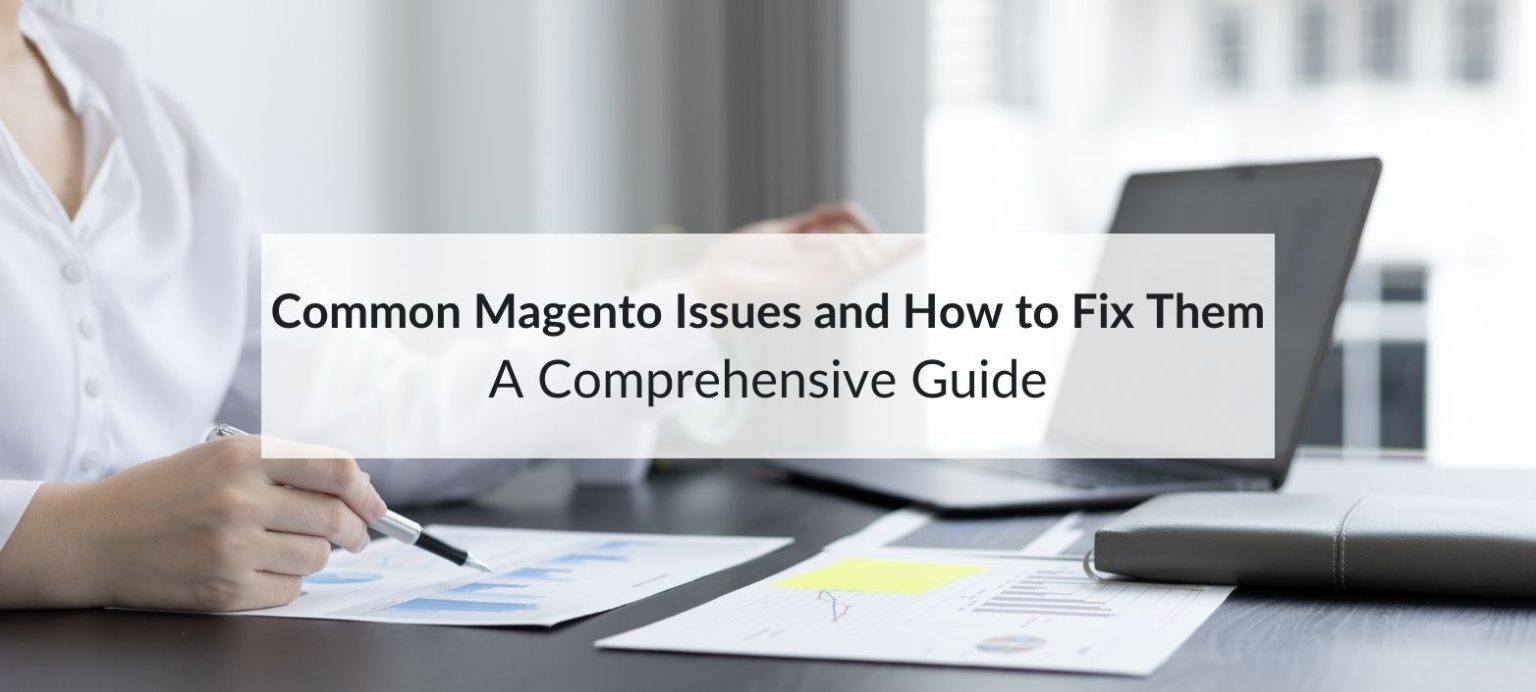Managing a Magento 2 store offers incredible opportunities but comes with its share of challenges. Common Magento issues can disrupt operations, negatively impact customer experience, and hurt revenue. To help you troubleshoot efficiently, this guide explores the most frequent Magento errors, their causes, and actionable fixes. Let’s dive in!
Top Magento Issues Every Store Owner Faces
1. 404 Error After Admin Login
The Issue:
You successfully log in, but the dreaded 404 error prevents you from accessing the admin dashboard.
Why It Happens:
This issue often stems from incorrect URL settings, outdated caches, or misconfigured permissions.
Quick Fix:
- Clear Your Browser Cache and Cookies: Ensure your browser doesn’t store outdated cache files.
- Verify Base URLs: Check the database entries for base_url in the core_config_data table and ensure they are correct.
- Run Commands in CLI:
php bin/magento cache:flush
php bin/magento setup:upgrade
- Reset Admin Permissions: If needed, adjust the role settings in the Magento backend.
2. Error Processing Request
The Issue:
You encounter a generic error message, often indicating deeper technical problems.
Why It Happens:
Missing cache files, broken database connections, or incorrect file permissions are common culprits.
Quick Fix:
- Clear Magento Cache:
php bin/magento cache:clean
- Check File Permissions: Ensure files are set to 644 and directories to 755.
- Enable Debug Mode: Check the var/log/system.log or var/log/exception.log files for detailed error messages:
php bin/magento deploy:mode:set developer
3. Product Images Not Showing
The Issue:
Product images fail to load, leaving blank placeholders on your store.
Why It Happens:
This can result from incorrect file permissions, missing static content, or media file location issues.
Quick Fix:
- Verify File Permissions: Ensure the pub/media folder and its subdirectories have appropriate read/write permissions.
chmod -R 777 pub/media
- Regenerate Static Content:
php bin/magento setup:static-content:deploy
- Flush Cache: Clear both Magento and browser caches to reflect changes.
4. Cron Jobs Not Running
The Issue:
Tasks like email notifications, reindexing, and scheduled updates fail to execute.
Why It Happens:
Cron jobs might not be correctly configured or scheduled on your server.
Quick Fix:
- Verify Cron Jobs: Check if the cron is set up using:
php bin/magento cron:check
- Set Up Cron Jobs: Add the following to your server’s crontab:
php /path-to-magento/bin/magento cron:run \
| grep -v "Ran jobs by schedule" \
>> /path-to-magento/var/log/magento.cron.log
- Monitor Logs: Review cron logs for any errors or missed schedules.
5. Memory Limit Exhausted
The Issue:
A memory exhaustion error prevents processes like indexing, updates, or product imports.
Why It Happens:
Your server’s PHP memory limit is too low to handle Magento’s resource-heavy processes.
Quick Fix:
- Increase PHP Memory Limit: Edit the php.ini file to increase the memory limit:
memory_limit = 2048M
- Adjust .htaccess (Optional): If you don’t have access to php.ini, modify .htaccess:
php_value memory_limit 2048M
- Restart the Server: Apply changes by restarting your server:
service apache2 restart
Best Practices for Managing Magento Issues

1. Regular Backups
Schedule regular backups of your database and files to safeguard against data loss during troubleshooting.
2. Monitor Logs
Always review Magento’s log files (var/log) for insights into system performance and errors.
3. Use Extensions Wisely
Only install trusted Magento extensions to avoid compatibility issues and performance bottlenecks.
4. Optimize Server Configuration
Ensure your hosting environment is Magento-optimized, with sufficient memory, disk space, and processing power.
5. Test Before Deployment
Use a staging environment to test updates, extensions, or major changes before applying them to your live store.
FAQs on Magento Issues
Why are Magento issues so common?
Magento is a complex platform that requires proper setup, hosting, and maintenance. Many issues stem from misconfigurations or insufficient server resources.
How do I prevent frequent Magento errors?
Regularly update your Magento version, use compatible extensions, monitor logs, and follow Magento’s official guidelines.
Should I hire a developer for Magento troubleshooting?
If errors persist or are beyond your technical expertise, hiring a certified Magento developer can save time and ensure proper fixes.
Conclusion
Magento issues are inevitable but manageable with the right approach. By understanding common problems and applying quick fixes, you can keep your store running smoothly and ensure a seamless shopping experience for your customers. Take the time to implement best practices and monitor your store’s performance to stay ahead of potential disruptions.

